Mastering Cold Weather Running: Tips, Benefits, and Safety
Running in the Cold: Mastering Winter Runs with Cold Weather Running Tips
Introduction
Running in cold environments is a unique and exhilarating experience, offering both challenges and rewards that differ significantly from its warmer counterpart. Unlike the scorching heat where your endurance might be tested against the sun, cold weather brings a different set of challenges and benefits to the forefront.
While you might be familiar with the hurdles and precautions of running in the heat, transitioning to colder conditions requires a fresh perspective. Cold weather running not only tests your physical resilience but also offers an opportunity to enjoy serene, snow-draped landscapes, often less crowded and more peaceful.
Physiological Responses and Health Considerations for running in the cold
Body’s adaptation to cold temperatures
As the temperature drops, your body adapts by constricting peripheral blood vessels to conserve heat, focusing on maintaining core temperature. This shift can leave muscles colder and stiffer, increasing the risk of injury. To counteract this, a proper warm-up routine is essential. It should include dynamic stretching, which involves active movements to warm up muscles, rather than static stretches. Good examples are leg swings, arm circles, and lunges, which increase blood flow and prepare your muscles and joints for the run ahead. This routine not only improves performance but also minimizes the risk of strains and sprains in cold conditions. Remember, the goal is to gently elevate your heart rate and body temperature, making your body more pliable and ready for the cold weather run.
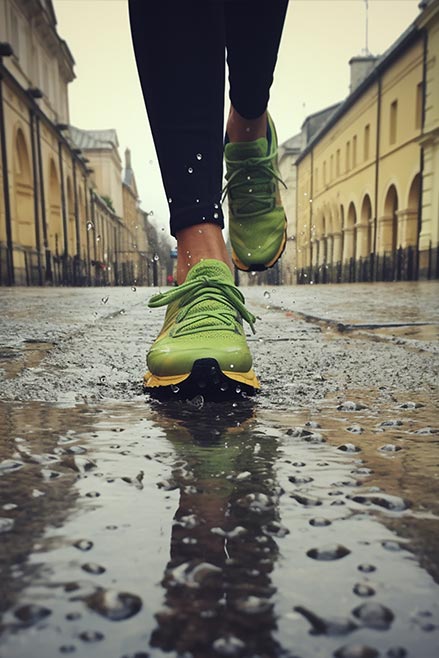 |
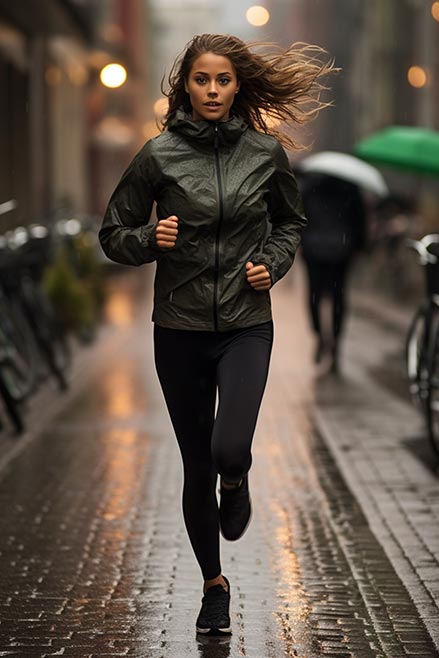 |
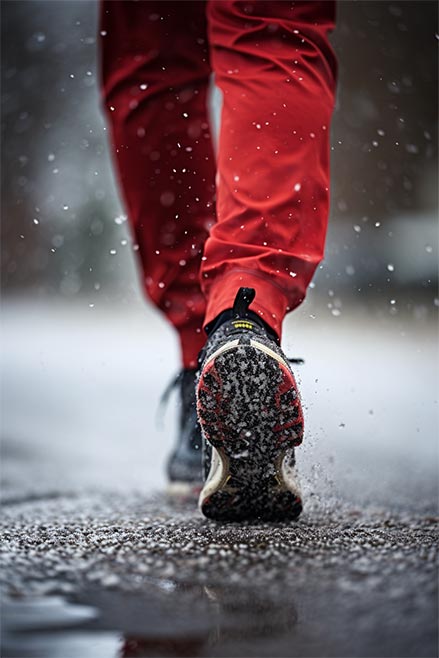 |
Mastering Cold Weather Running: Tips, Benefits, and Safety - www.kowloonsports.com
Health benefits and risks of cold weather running
Running in cold weather has unique health benefits, including enhanced calorie burning due to the body’s increased effort to maintain core temperature. This environment also fosters improved endurance and mental resilience. However, it’s vital to be aware of the risks, primarily hypothermia and frostbite.
Hypothermia occurs when your body loses heat faster than it can generate, leading to abnormally low body temperature. Symptoms include intense shivering, slurred speech, loss of coordination, and fatigue. If you experience these symptoms, it’s crucial to stop running, seek shelter, and warm up gradually.
Frostbite is a risk in extreme cold, particularly for exposed skin. Early signs include numbness, tingling, or an aching sensation in the affected areas, followed by pale or waxy-looking skin. If you suspect frostbite, gently warm the area but avoid rubbing, as this can cause tissue damage. In both cases, seeking medical attention is advised if symptoms are severe.
Incorporating layering strategies with moisture-wicking fabric in your running attire can greatly mitigate these risks. Additionally, understanding your personal temperature thresholds and setting weather safety limits are key to ensuring safe and enjoyable winter runs.
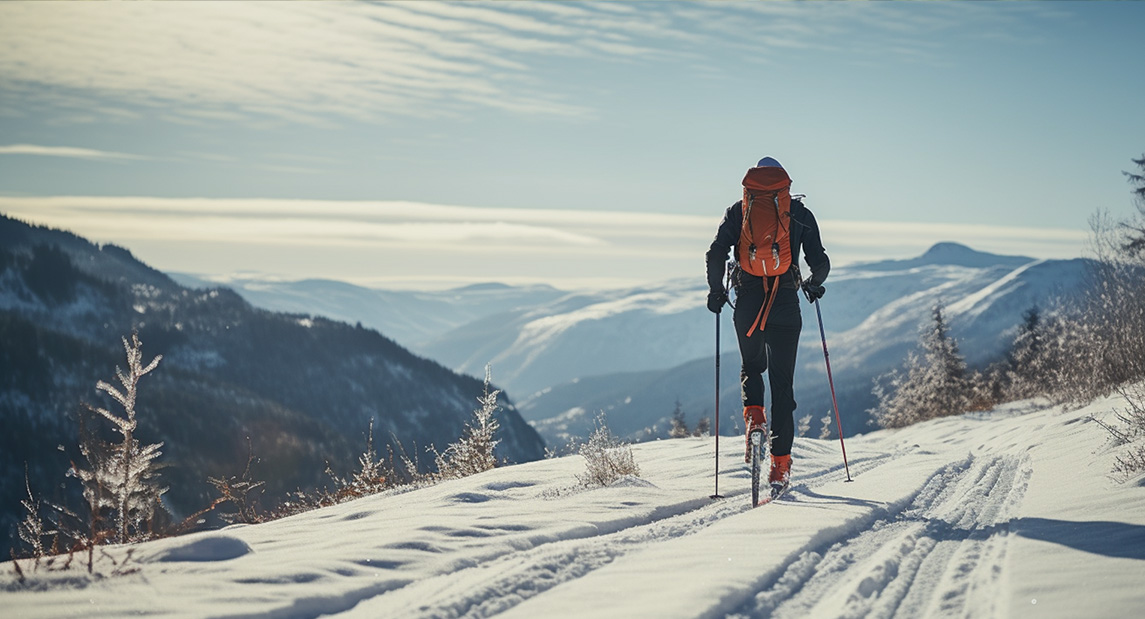
Benefits of Running in winter
Running in the chill of winter not only tests your physical limits but also brings significant benefits:
-
Enhanced Calorie Burning
-
In cold weather, your body experiences a significant increase in calorie expenditure. Biologically, this is due to the body’s need to generate more heat to maintain a stable internal temperature, a process known as thermogenesis. When you run in cold environments, as detailed in “The Effects of Cold Stimulation and Exercise on Human Health,” your body works harder to produce heat, thereby burning more calories.
For example, shivering, an involuntary response to cold, activates muscle contractions, which increases energy expenditure. Additionally, even without shivering, your body metabolizes fat to produce heat, further contributing to calorie burn. This process is intensified during physical activities like running, where the body’s metabolic rate naturally increases to meet the demand for more energy. Thus, winter workouts, including running, can be more effective for those aiming for weight management or increased fitness levels.
-
Improved Endurance and Mental Toughness
-
Running in cold weather significantly strengthens mental health and toughness. This improvement stems from overcoming the instinctual desire for comfort and warmth. Each time a runner chooses to face the cold, it reinforces self-discipline and resilience. The challenge of enduring lower temperatures and harsher conditions fosters mental fortitude. According to the study “The Effects of Cold Stimulation and Exercise on Human Health,” this form of mental conditioning is crucial for athletes, as it enhances their ability to endure not only physical but also psychological stressors, building a stronger, more resilient mindset.
-
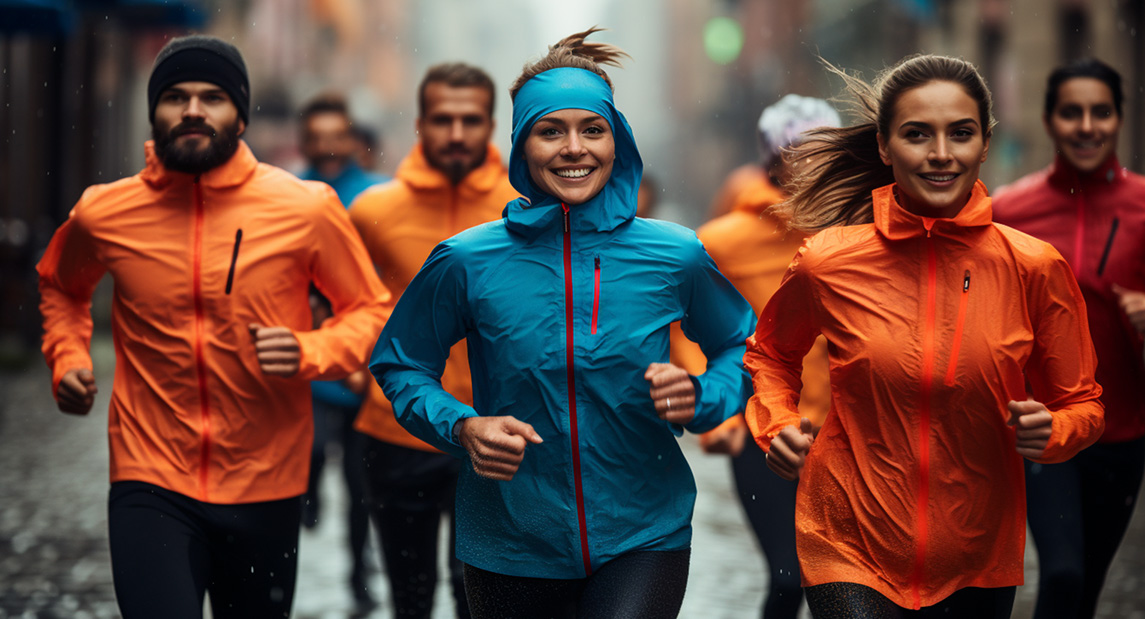
Psychological Aspects of a winter run
-
Running in cold weather isn’t just a physical challenge; it’s a mental one as well:
-
Motivation to Run in Cold Weather: Finding the drive to step out into the cold can be tough. However, understanding the mental health aspects, such as coping with Seasonal Affective Disorder (SAD) and stress relief through exercise, as highlighted in “International Journal of Environmental Research and Public Health,” can be a powerful motivator. Also, integrating tips from articles like Getting Fit: How Much Exercise Is Recommended can help set realistic goals and expectations.
-
Coping Strategies for the Mental Challenges: Mental toughness in cold weather, a key element of winter running strategies, can be developed through regular practice and positive reinforcement. Understanding your temperature thresholds and tailoring your runs accordingly, as discussed in “The impact of weather on summer and winter exercise behaviors,” helps in gradually adapting to the cold. Additionally, strategies like visualization, setting small goals, and focusing on the unique peacefulness of winter landscapes can be effective. For insights into endurance and health, consider reading Endurance Sport and Health.
-
Risks and Challenges of cold exposure
Potential Health Risks (Hypothermia, Frostbite)
Running in cold weather poses risks like hypothermia and frostbite, particularly when the core temperature drops. Hypothermia occurs when the body loses more heat than it can produce, leading to a dangerously low body temperature. Frostbite, on the other hand, affects extremities exposed to cold and wet conditions. These risks are heightened during winter sport activities such as cross-country ski or running in the snow.
Difficulty in Breathing in Cold Air
In cold conditions, breathing can become notably more challenging due to physiological responses to cold air. When you inhale cold, dry air, your body must work to warm and humidify it for efficient lung function. This process can cause the airways to narrow, a phenomenon known as bronchoconstriction. It’s particularly noticeable in activities like running in cold weather or winter sports, where heavy breathing is common. This constriction can lead to a sensation of tightness in the chest and shortness of breath, impacting the respiratory health of runners, especially those with pre-existing conditions like asthma. Understanding the effects of cold air on breathing is crucial for safely maintaining winter workouts.
Navigating Icy or Slippery Surfaces
When running in cold weather, particularly in urban environments, visibility is as crucial as navigating the terrain. Reflective wear becomes essential, especially since many running gears are black, making runners less visible to drivers in the dark. Reflective clothing significantly improves safety by making runners more noticeable.
The danger of icy or slippery surfaces cannot be overstated. Ice and rain can fill potholes and create hazardous conditions, making it challenging to maintain balance and stability. It’s vital to be cautious and choose routes wisely, avoiding areas prone to ice accumulation or waterlogging. Specialized footwear can provide better traction and stability, reducing the risk of slips and falls.

Clothing and Equipment - Choosing the right gear
Layering for Warmth and Moisture Management
Effective layering is critical for cold-weather running, offering versatility and adaptability to changing conditions:
-
Base Layer: Keeps the skin dry by wicking sweat away. Options include compression garments or lightweight thermals made from materials like merino wool or synthetic blends.
-
Mid Layer: Provides insulation. Popular choices are fleece jackets or vests, which offer warmth without excessive bulk.
-
Outer Layer: Shields against wind and moisture. Breathable, waterproof jackets are ideal.
-
Accessories: Don’t forget gloves, thermal socks, and hats to protect extremities.
Fabric Comparison for Cold Weather Exercise
| Fabric Type | Pros | Cons | Suitable for Layering? |
|---|---|---|---|
| Merino Wool | Warm, excellent moisture-wicking | Can be expensive, slower to dry | Ideal as base layer |
| Synthetic (e.g., Polyester) | Quick-drying, durable | Less effective odor control | Great for base or mid layer |
| Fleece | Good insulation, lightweight | Not windproof or waterproof | Best as mid layer |
| Gore-Tex (Outer Layer) | Waterproof, windproof | Less breathable, can be pricey | Essential as outer layer |
| Cotton | Comfortable, affordable | Absorbs and retains moisture, slow drying | Not recommended for cold weather running |
Essential Gear for Visibility, Traction, and Protection
Visibility is crucial, especially when running in the dark. LED lights or headlamps are essential, offering high visibility and ensuring safety. When choosing LED lights, look for features like adjustable brightness, long battery life, and weather resistance. Regularly checking and replacing batteries is a must for consistent performance.
Regarding footwear, different sole types cater to various needs:
-
Running Shoes: Look for soles with enhanced grip for wet and icy conditions.
-
Trekking Shoes: Opt for robust traction suitable for uneven terrain.
-
Ice Traction Devices: These can be attached to shoes for extra grip on slippery surfaces.
In addition to the basics, modern functional gear like GPS devices, scarves, arm warmers, and beanies add significant value to cold-weather running. GPS devices are crucial for tracking routes and progress, especially in areas with low visibility or complex terrain. Scarves, arm warmers, and beanies, once considered bulky, are now designed to be lightweight and efficient, providing warmth without the weight. These advancements mean that leaving such accessories at home due to weight concerns is a thing of the past. Lightweight yet effective, they ensure comfort and safety without compromising on performance.
Nutrition and Hydration
When running in cold weather, the body’s metabolic rate increases to generate more heat, leading to higher calorie consumption. This process, known as thermogenesis, is your body’s way of maintaining a stable internal temperature in cold conditions. Consequently, your nutritional needs also increase.
Pre-Exercise Nutrition
Before a cold weather run, focus on meals that are rich in complex carbohydrates for sustained energy release. Options like oatmeal, whole grain bread, and bananas are excellent choices. These carbs are crucial for fueling the enhanced metabolic activity in the cold.
During Exercise
For longer runs, consider carrying energy gels or bars to maintain energy levels. Despite reduced thirst response in cold weather, staying hydrated is essential. Use insulated bottles to prevent liquids from freezing and consider warm beverages like herbal teas for comfort.
 |
 |
 |
Mastering Cold Weather Running: Tips, Benefits, and Safety - www.kowloonsports.com
Post-Exercise Nutrition
Proper post-exercise nutrition is crucial for recovery, especially after cold-weather running. The focus should be on replenishing glycogen stores and repairing muscles. Here’s a table suggesting various meals and their benefits:
| Meal Option | Key Benefits | Recovery Aspect |
|---|---|---|
| Chicken and vegetable stir-fry | High in protein, vitamins, and minerals | Muscle repair, immune support |
| Salmon with sweet potato | Omega-3 fatty acids, complex carbs | Anti-inflammatory, energy replenishment |
| Quinoa and black bean salad | Plant-based protein, fiber | Muscle repair, digestive health |
| Greek yogurt with berries and nuts | Protein, antioxidants, healthy fats | Muscle recovery, cell repair |
Each of these meals provides a balance of nutrients that aid in recovery, addressing different aspects like muscle repair, inflammation reduction, and energy replenishment.
Hydration Strategies
Contrary to popular belief, dehydration can occur just as easily in cold weather. Keep a regular hydration schedule and include electrolytes to replenish what’s lost in sweat.
By understanding and adapting your nutrition and hydration strategies to the unique demands of cold weather running, you can optimize your performance and recovery. For more meal ideas, especially breakfast options that cater to runners, check out Healthy Breakfast for Runners.
Conclusion
As we draw to a close, consider this an invitation to embrace the exhilarating world of cold-weather running. It’s not just an exercise routine; it’s an adventure, a test of endurance, and a way to discover your resilience. The crisp air, the quiet of a winter landscape, and the feeling of conquering the chill are experiences unique to this season. So, dress appropriately, prepare wisely, and step out. Whether you’re running through a serene snow-covered park or along a frosty trail, each step is a celebration of your strength and spirit. Remember, the cold is not a barrier, but a new landscape to explore. Let the winter be your playground!
20-12-2023 KOWLOONSPORTS


 Español
Español Deutsch
Deutsch English GB
English GB



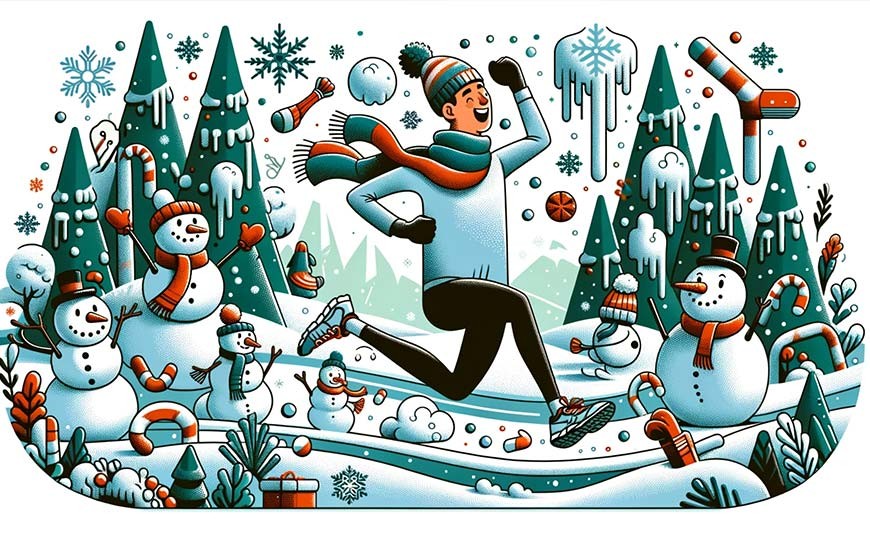
Leave a Reply Cancel Reply